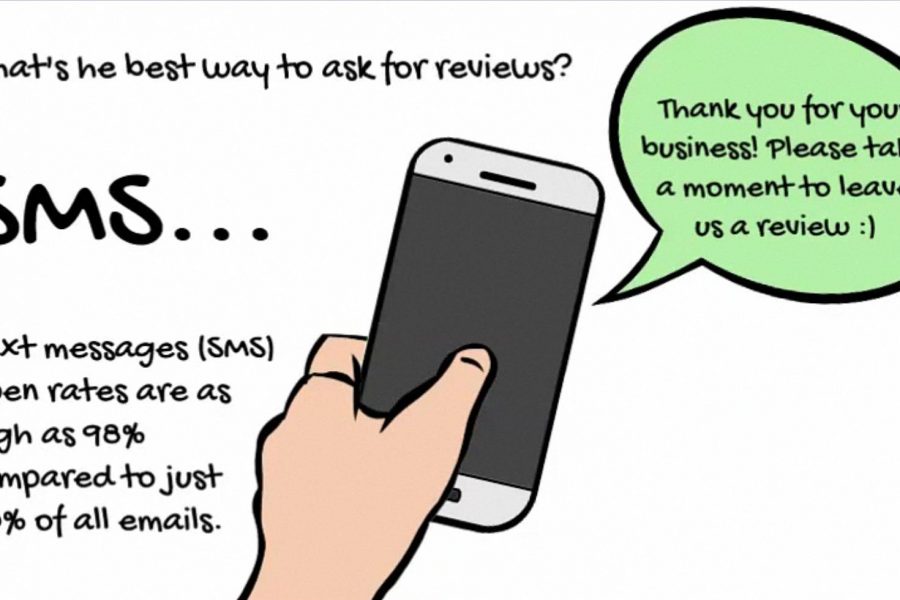I’ve watched how brands show up online, and I’ve seen how many leave their digital presence to chance. You’ve got a website, maybe social posts, and a listing on Google. Good start, but unless you tie it all together, you’re leaving customers and opportunities on the table.
I’m Jarod Thornton, and I’ve spent nearly two decades helping hundreds of small businesses achieve the visibility, clarity, and web presence they deserve. To me, your “online address” isn’t just a URL; it’s where customers find you, trust you, and reach out.
When each piece of your digital presence works together, you stand out. That’s why I prepared this post, outlining the most effective ways to optimize your digital presence.
What Is Web Presence Management?
When people ask me what web presence management means, I usually tell them this: it’s everything that happens after your website goes live.
It’s how you show up online, on Google, on social media, in search results, and in conversations you may not even know are happening. Every piece adds up to one big question: Are you managing your brand’s online presence, or is it managing you?
Your Website Is the Anchor
Everything starts with your website. It’s the only digital asset you fully own. Social platforms, ad accounts, and algorithms can change overnight, but your site is yours.
It should be fast, mobile-friendly, and built to convert, not just looks, as search engines and users both reward usability.
If your site loads slowly, breaks on mobile, or doesn’t clearly tell visitors what to do next, you’re losing ground before your other marketing efforts even take effect.
SEO Keeps You Findable
A beautiful website doesn’t mean anything if no one finds it.
SEO connects your brand with real people searching for your products or services. It covers everything from keyword strategy and metadata to schema markup, internal linking, and local citations.
The goal is visibility with intent. When someone searches for what you offer, the odds of seeing you should be high. That’s why you need a basic guide to SEO for beginners.
Content Is the Connection
Every word you publish online, from blog posts and social updates to photo captions, tells people (and search engines) what you’re about.
Good content builds trust. Great content earns attention.
I use blog articles to educate and attract, but I also look at how they interact with social channels and search intent. One optimized post can show up on Google, feed social updates, and drive engagement across multiple platforms.
That’s how content multiplies value. Also, learn why you should start using video for content marketing.
Social Media Extends the Brand
Your social channels do more than merely promote your brand. They’re a core part of your brand’s communication layer.
Every platform serves a different purpose. The one thing these platforms all have in common is that they put your brand in front of potential customers.
Utilize all the social media platforms where you are mentioned or discussed to manage your reputation and customer service.
In other words, social media can extend your brand and create a relationship with your customers beyond just selling products or services.
You don’t have to be on every social media platform; I recommend being consistent on the ones that matter.
Analytics Tie It All Together
Without data, web presence management is guesswork. Analytics tell you what’s working, what’s not, and where your energy should go.
I use analytics to track performance across search, content, and social media. The key is integration, seeing how everything interacts, rather than treating each channel like a silo.
When your website, SEO, and social media data align, you see the true picture of your brand’s visibility.
Why Your Web Presence Matters
I’ve seen great businesses stay invisible online because they didn’t manage their presence. They had strong products, solid reputations, and happy customers, but none of that matters if people can’t find you, recognize you, or trust you online.
Your web presence is your business’s reputation, marketing, and customer service all rolled into one. The following are some reasons why you can’t afford to ignore web presence management.
1. Visibility Drives Opportunity
People don’t flip through phone books anymore. They Google you.
When your brand appears in search results, on social feeds, and in review listings, you’re more than just discoverable; you’re also credible.
That’s what proper web presence management does; it keeps you visible where your audience already spends their time.
2. Trust Is Built Before the First Click
People start forming opinions long before they contact you. Visitors lose trust fast if your last Facebook post was a year ago, your reviews go unanswered, or your website still looks like it’s from 2010.
A consistent digital presence tells customers you’re active, reliable, and professional. I always tell clients: trust is a design, not a feature. It’s built through cohesive messaging, updated content, and responsiveness across all touchpoints.
3. Consistency Fuels Brand Recognition
Every post, ad, and page view reinforces (or weakens) your brand identity. Consistency across visuals, tone, and messaging makes your business memorable.
When your logo, headlines, and content all speak the same language, people remember who you are.
That’s why I look at web presence as one continuous brand story, not separate platforms. Whether someone finds you on LinkedIn, Instagram, or Google, the experience should feel connected.
4. Competitive Edge in a Crowded Market
Here’s the reality: your competitors are already investing in digital visibility. If you’re not managing your web presence, they’re showing up where you’re not.
The good news is that most still do it inconsistently. So, you’ll pull ahead in due time if you commit to managing your web presence by posting, optimizing, tracking, and adapting your content.
I’ve watched small local businesses outrank national chains because they stayed consistent.
Core Branches of Web Presence Management
Managing your brand presence demands more than just SEO and web design, as every piece, across various platforms, feeds the next.
It’s a rhythm. Once it’s in sync, everything from search rankings to engagement starts to move in the same direction.
1. SEO: The Foundation of Visibility
Search engine optimization is the bedrock of any strong web presence. SEO today is technical architecture, Core Web Vitals, structured data, and intent mapping.
It involves researching and selecting relevant keywords, optimizing website content, and building backlinks to establish authority.
SEO evolves constantly as well, so businesses must stay informed and adapt to keep up with changing algorithms.
Pro Tip
You’re driving blind if you’re not tracking impressions and click-throughs in Google Search Console. The data tells you where your content wins, and where it disappears (or never appears at all).
2. Content: The Voice That Connects Everything
When I previously discussed how crucial content is in a digital marketing strategy, I explained that it’s how you educate, attract, and build trust without selling every sentence.
I use content to connect the dots between visibility and engagement.
- A blog post that answers a customer’s question fuels SEO.
- A snippet from that post turns into a LinkedIn update.
- A paragraph becomes an Instagram caption.
That’s how one piece of content becomes a system, and it doesn’t stop at writing.
Good visuals, readable layouts, and clear calls to action all matter. Every piece of content is an opportunity to reinforce expertise and relevance.
3. Social Media: The Ongoing Conversation
Social media is where your brand personality lives. It’s the place people see that you’re active.
If you know how to manage your online reputation as a business, you’ll treat every platform differently. Not every audience needs the same energy:
- Facebook is for community building. It’s where updates and conversations thrive, especially in FB groups.
- Google Business Profile (formerly GMB) builds credibility with local reviews, posts, and service highlights.
- Instagram is for visual storytelling to build familiarity and emotional connection.
- LinkedIn cultivates authority. It’s where thought leadership earns trust.
- X (Twitter) is best for immediacy, i.e., announcements, insights, and direct engagement.
Don’t chase vanity metrics. Instead, focus on consistency and clarity; showing up with value, not noise.
4. Analytics: The Feedback Loop
This branch is where everything comes together. Analytics give context to effort: what’s working, what’s not, and what to fix next.
When I review analytics, I’m not just looking at traffic spikes or bounce rates. I’m tracing behavior, i.e.,:
- How users move through the site.
- What they interact with.
- What actions do they take afterward?
Tools like Google Analytics 4, Search Console, and Meta Insights are real-time feedback loops. They tell you where to double down, when to pivot, and what your audience actually values.
5. How It All Works Together
The best part of managing a web presence is watching these pieces overlap.
SEO drives new visitors. Content educates and converts them. Social channels extend reach and build relationships. Analytics close the loop with insight.
When you align these branches, you stop running random marketing tasks and start running a system that scales, measures, and continuously improves.
You see how misguided the website vs. social media debate is?
Managed Web Presence Services
As we have discussed, a well-rounded web presence is vital for any business or organization. However, managing all the elements of an online presence can be overwhelming and time-consuming.
Smart business people appreciate the need for managed web presence services. It’s about long-term strategy, putting systems in place that keep your business visible, consistent, and measurable.
You wouldn’t ignore your books for six months and expect your business to run smoothly. The same goes for your digital footprint.
How Adopt the Web Handles Your Online Presence and Reputation
We start every managed web presence project we undertake with a comprehensive audit. We examine how your website performs technically, how your content ranks, where your traffic originates, and how your audience interacts.
That tells us what’s actually working, and what’s just taking up space. From there, we curate a plan around your goals.
Do you need to:
- Improve visibility? We focus on SEO and search performance.
- Drive engagement? We optimize your content and social posting strategy.
- Generate leads? We connect analytics and automation to track what converts.
We don’t use “one-size-fits-all” strategies.
Every business has a different audience, market, and tone, and your digital presence should reflect that.
Ongoing Management
To us, web presence management is a loop, not a launch.
Each month, we refine what’s already live:
- SEO gets tuned.
- Blog posts are updated or repurposed.
- Social content gets tested and improved.
- Analytics shape the next round of action.
This ongoing rhythm is what keeps a brand alive online. Algorithms change, platforms evolve, but consistency and adaptability always win. I’d rather adjust every month than overhaul once a year.
Connecting the Dots
What’s the most common mistake we see? We see businesses running their digital channels separately.
- Their SEO agency doesn’t talk to their social team.
- Their designer never sees the analytics.
- Their posts don’t align with their content calendar.
That disconnect kills momentum. When Adopt the Web manages your web presence, we connect everything under one strategy.
- Your SEO feeds your content.
- Your content fuels your posts.
- Your posts drive engagement that feeds back into your analytics.
- Once those pieces work together, the results compound.
Online Reputation and Brand Perception
Reputation management is part of this process, not an afterthought. When people search your business name, the first thing they see isn’t always your website. It’s your reviews, ratings, and mentions.
That means every Google review, social comment, or local listing update plays into how people perceive your brand. We monitor, respond, and refine.
- A negative review gets addressed quickly.
- Positive feedback gets amplified.
- Every public interaction is a chance to reinforce trust.
Damage control is essential, but we approach reputation management as proactive storytelling.
The more consistent and professional your brand appears across Google, Facebook, LinkedIn, and industry sites, the more likely people are to trust you before you ever talk to them.
When your reputation and your digital presence align, you build authority that marketing alone can’t buy.
Building a Web Presence That Works While You Sleep
There’s one thing I’ve learned after nearly two decades of helping businesses build a real online footprint: Web presence management centers on alignment.
Every post, page, and pixel should work together to earn trust and attract attention. When your website, SEO, content, social media, and analytics all move in sync, your business becomes unstoppable.
Let’s talk if you’re ready to connect the dots and build a system that keeps working even when you’re not.



